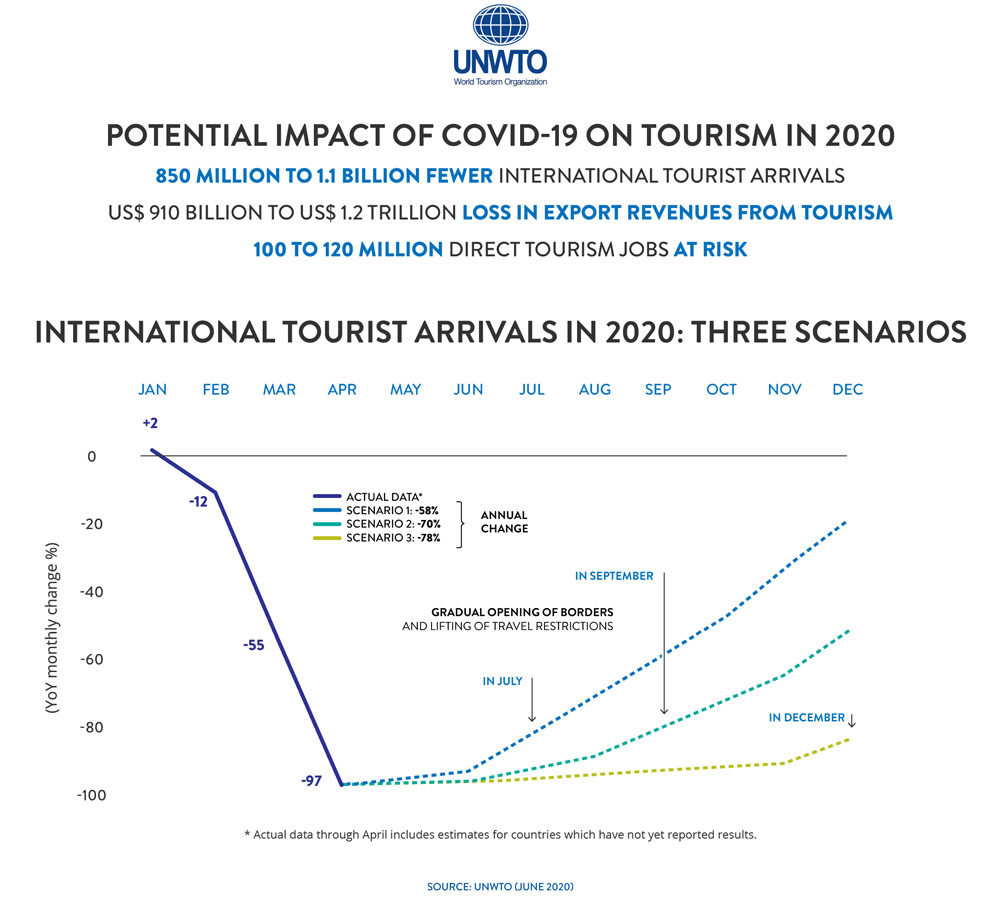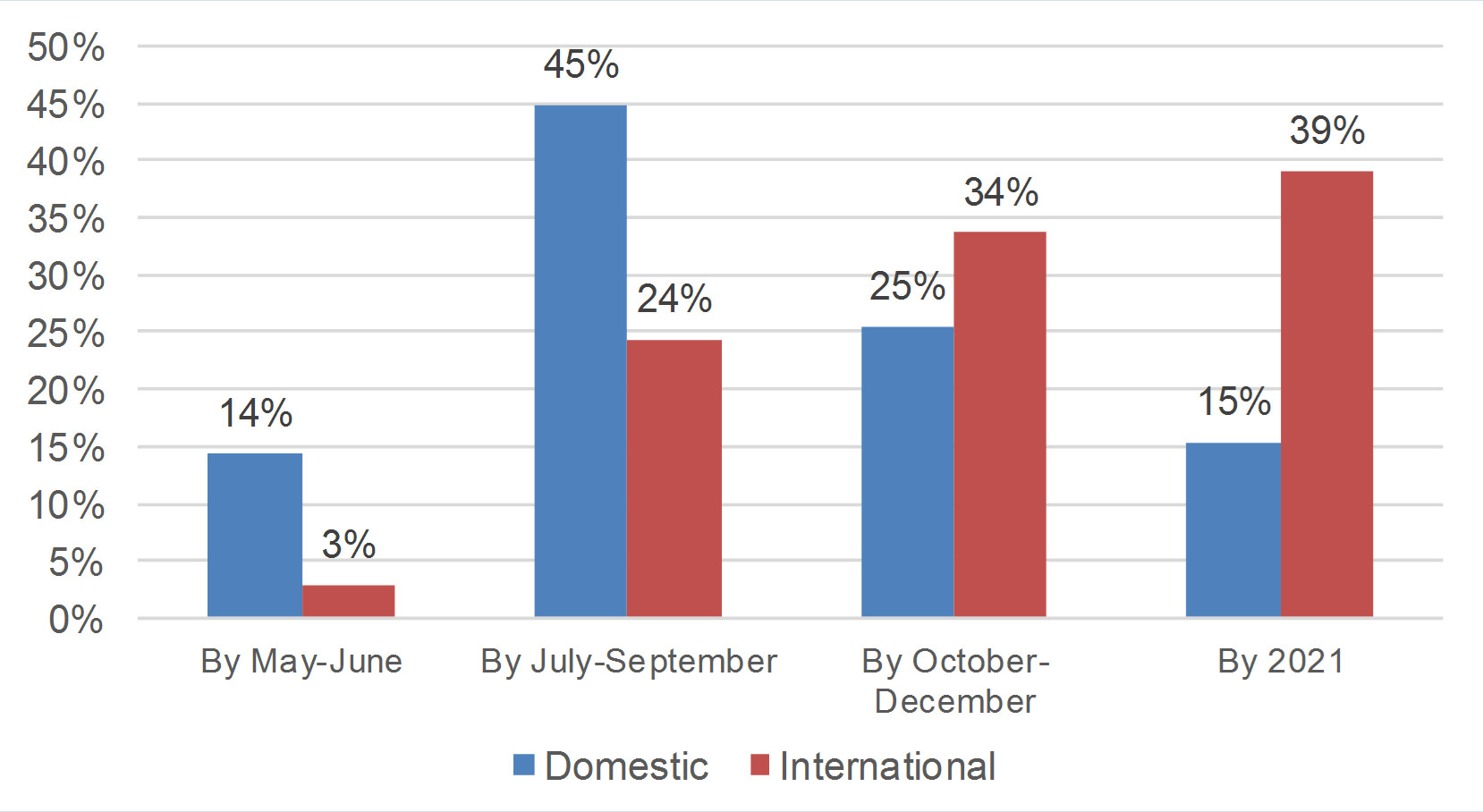Tourist Arrivals Down 87% in January 2021 as UNWTO calls for Stronger Coordination to Restart Tourism
The devastating impact of the COVID-19 pandemic on global tourism has carried on into 2021, with new data showing an 87% fall in international tourist arrivals in January as compared to 2020. The outlook for the rest of the year remain cautious as the World Tourism Organization (UNWTO) continues to call for stronger coordination on travel protocols between countries to ensure the safe restart of tourism and avoid another year of massive losses for the sector.
Following a difficult end to 2020, global tourism suffered further setbacks in the beginning of the year as countries tightened travel restrictions in response to new virus outbreaks. According to the latest edition of the UNWTO World Tourism Barometer, all world regions continued to experience large drops in tourist arrivals in the first month of the year. Mandatory testing, quarantines, and in some cases the complete closure of borders, have all hindered the resumption of international travel. In addition, the speed and distribution of the vaccination roll-out have been slower than expected, further delaying the restart of tourism.
All global regions hit hard
The international community needs to take strong and urgent action to ensure a brighter 2021. Many millions of livelihoods and businesses are depending on it
Asia and the Pacific (-96%), the region which continues to have the highest level of travel restrictions in place, recorded the largest decrease in international arrivals in January. Europe and Africa both saw a decline of 85% in arrivals, while the Middle East recorded a drop of 84%. International arrivals in the Americas decreased by 77% in January, following somewhat better results in the last quarter of the year.
UNWTO Secretary-General Zurab Pololikashvili said: “2020 was the worst year on record for tourism. The international community needs to take strong and urgent action to ensure a brighter 2021. Many millions of livelihoods and businesses are depending on it. Improved coordination between countries and harmonized travel and health protocols are essential to restore confidence in tourism and allow international travel to resume safely ahead of the peak summer season in the northern hemisphere.”
Outlook for 2021
With 32% of all global destinations completely closed to international tourists at the beginning of February, UNWTO anticipates a challenging first few months of 2021 for global tourism.
Based on current trends, UNWTO expects international tourist arrivals to be down about 85% in the first quarter of 2021 over the same period of 2019. This would represent a loss of some 260 million international arrivals when compared to pre-pandemic levels. Looking ahead, UNWTO has outlined two scenarios for 2021, which consider a possible rebound in international travel in the second half of the year. These are based on a number of factors, most notably a major lifting of travel restrictions, the success of vaccination programmes or the introduction of harmonized protocols such as the Digital Green Certificate planned by the European Commission.
The first scenario points to a rebound in July, which would result in a 66% increase in international arrivals for the year 2021 compared to the historic lows of 2020. In this case, arrivals would still be 55% below the levels recorded in 2019. The second scenario considers a potential rebound in September, leading to a 22% increase in arrivals compared to last year. Still, this would be 67% below the levels of 2019.

Related Links
- Download the news release in PDF
- UNWTO Tourism Data Dashboard
- UNWTO: Tourism and COVID-19
- UNWTO World Tourism Barometer, Volume 19, Issue 2, marzo 2021
- UNWTO World Tourism Barometer and Statistical Annex, March 2021










 Source: UNWTO
Source: UNWTO



